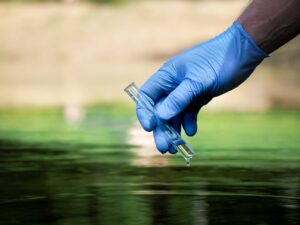Maintaining high water quality is essential for the health of ecosystems, human communities, and agricultural practices. Effective water quality monitoring ensures that our water resources remain safe and sustainable. Whether you are a professional in environmental science or a concerned citizen, here are some top tips for conducting water quality monitoring:

- Understand the Basics – Before diving into water quality monitoring, familiarize yourself with the fundamental parameters you need to measure. Key indicators include:
- pH Level: Indicates the acidity or alkalinity of the water.
- Dissolved Oxygen (DO): Essential for the survival of aquatic life.
- Turbidity: Measures water clarity, which can affect light penetration and photosynthesis.
- Nutrient Levels: Includes nitrogen and phosphorus, which can lead to eutrophication if levels are too high.
- Temperature: Influences biological activity and chemical processes in the water.
- Choose the Right Equipment – Invest in reliable and accurate equipment for water testing. Depending on your needs, you may require:
- Portable Test Kits: For basic on-site measurements.
- Digital Meters: For more precise readings of pH, DO, and turbidity.
- Automated Sensors: For continuous monitoring and data logging.
- Develop a Monitoring Plan – Create a comprehensive plan that outlines:
- Sampling Locations: Choose sites that are representative of the water body being studied.
- Frequency of Testing: Determine how often samples should be taken to get an accurate assessment of water quality over time.
- Sampling Methods: Standardize procedures to ensure consistency and reliability in your data.
- Follow Proper Sampling Techniques – Adhere to best prac
tices when collecting water samples to avoid contamination and ensure accuracy:
- Clean Equipment: Rinse all equipment with the water you are sampling to avoid cross-contamination.
- Correct Depth: Collect samples at the appropriate depth, as water quality can vary with depth.
- Label Samples: Clearly label each sample with the date, time, and location.
- Record and Analyze Data – Consistent and detailed record-keeping is vital:
- Log Details: Record all data meticulously, including environmental conditions like weather and recent rainfall.
- Use Software: Employ data management software to analyze
trends and identify potential issues.
- Maintain Equipment Regularly – Regular maintenance ensures the longevity and accuracy of your equipment:
- Calibrate Instruments: Frequently calibrate your sensors and meters according to the manufacturer’s instructions.
- Clean Equipment: Regularly clean your equipment to prevent buildup and ensure accurate readings.
- Replace Components: Periodically check and replace worn-out parts to maintain functionality.
- Interpret Results Accurately – Understanding what your data means is crucial for making informed decisions:
- Compare with Standards: Compare your results with local, state, and national water quality standards to determine if action is needed.
- Seek Expertise: Consult with environmental scientists or water quality experts if you encounter unusual results or require further analysis.
- Report Findings – Share your findings with relevant stakeholders:
- Public Reports: Publish regular reports on water quality status to inform the public and policymakers.
- Collaborate: Work with local authorities, environmental organizations, and other stakeholders to address water quality issues.
- Stay Informed – Stay updated with the latest advancements and best practices in water quality monitoring:
- Professional Development: Attend conferences, workshops, and training sessions.
- Literature: Read scientific journals and publications to keep abreast of new research and technologies.
By following these top tips, you can effectively monitor water quality and contribute to the protection and preservation of our vital water resources. Remember, consistent and accurate water quality monitoring is a key step towards ensuring a sustainable and healthy environment for all.
Bronwyn Reid | June 2024
